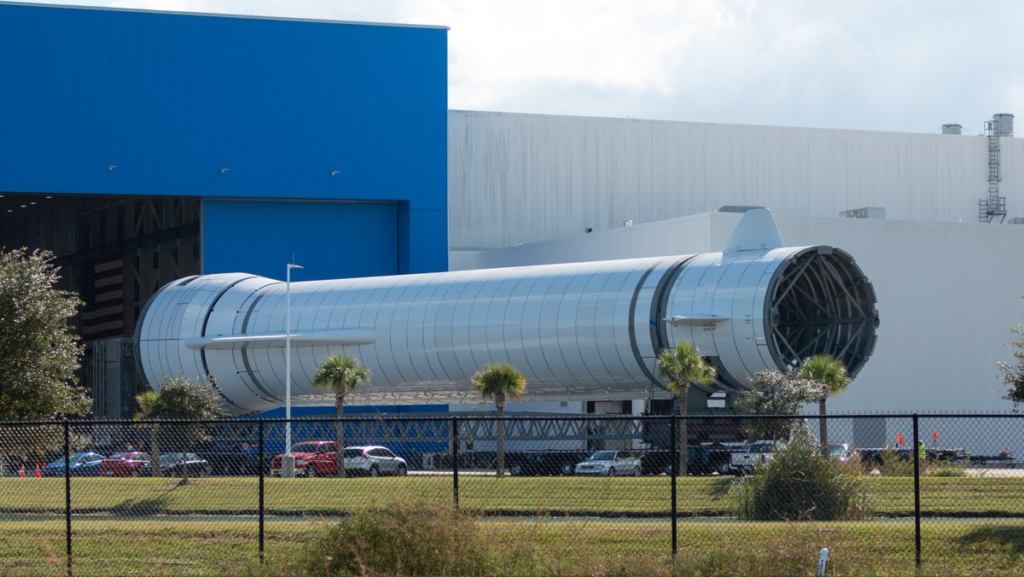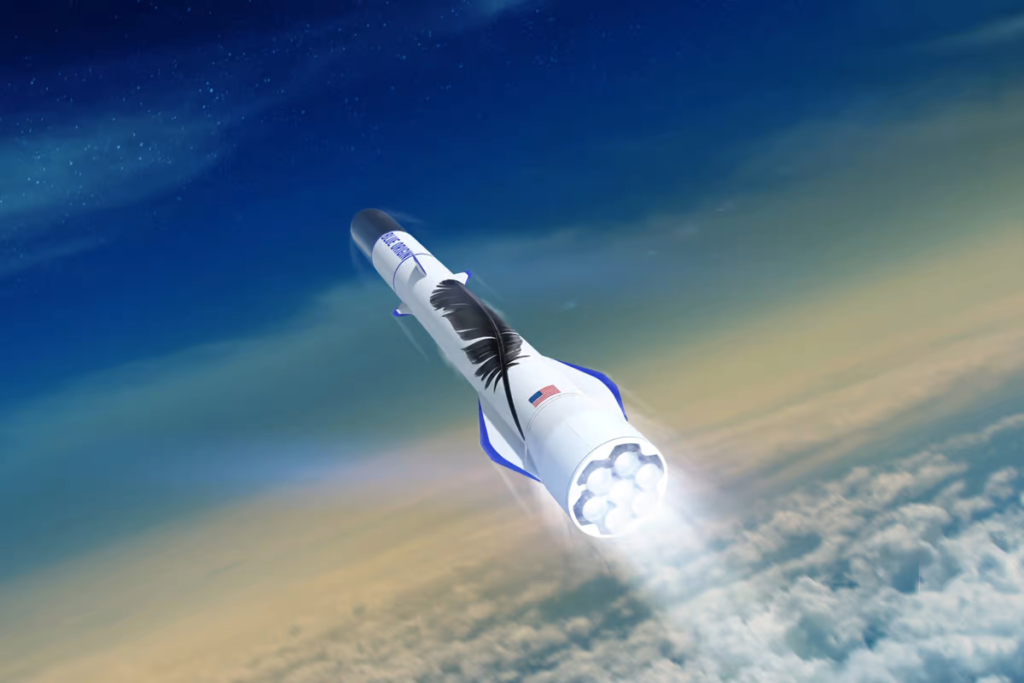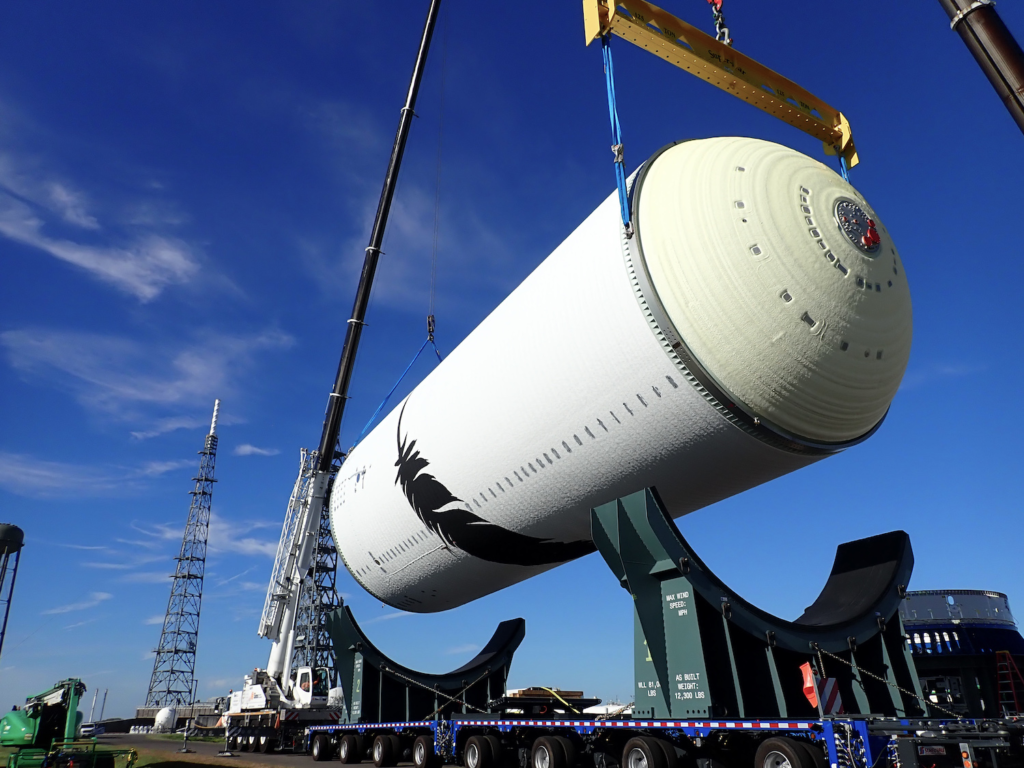
How Close Is New Glenn To Its Maiden Flight?
Recent updates from NASA and various officials suggest New Glenn will be ready for its first official mission by August of next year. With only about 9 months of time before then, it begs the question of how much progress has the company made and is a launch so soon realistic. After all, Blue Origin still has a long list of testing and developmental milestones before this vehicle will be ready.
At the same time, NASA has a lot more information on Blue Origin’s progress than the company releases to the public. In other words, they could be further along than we know simply because Blue Origin keeps a lot of information to itself. Here I will go more in-depth into New Glenn’s progress, the upcoming launch date, its busy future, and more.
Approaching Launch Date

Early this year in February, NASA awarded Blue Origin and the New Glenn vehicle a mission to Mars carrying two spacecraft. At the time they mentioned that the launch would be sometime in 2024 which came as a surprise. However, they also clarified that this specific mission was a Class D mission. NASA describes this type of mission as low priority and high risk. They also point out that Class D missions have significant alternative or reflight opportunities. With this in mind, at the time of the award, it seemed like NASA was simply hoping New Glenn would be ready but not too concerned if it wasn’t.
Fast forward to today, and the sentiment by the agency seems to have shifted slightly. Recently, at a November 20 meeting of the NASA Advisory Council’s human exploration and operations committee, Bradley Smith, director of NASA’s Launch Services Program, said the agency’s Mars-bound ESCAPADE smallsats will fly on an “incredibly ambitious first launch for (Blue Origin’s) New Glenn” rocket “around this time next year.” He continued by saying, “We will very likely be the very first launch of New Glenn.”
That is acceptable, Smith said, since ESCAPADE is what NASA characterizes as a “class D” mission with a higher tolerance for risk. “We’re willing to take a little bit of risk with a price tag and a mission assurance model that reflects that risk” he said.
These are bold comments as he suggests that even with less than a year until this mission is expected to lift off, he believes Blue Origin will be ready. In another quote, he said, “There’s certainly some schedule risk associated with New Glenn getting to the pad,” noting he has seen Blue Origin’s schedule for the vehicle but did not disclose details about it. It’s also important to point out that because this is a Mars mission, there are extremely limited options as far as launch delays go. Mars gets in position every two years for a mission and there is only a small time period where you can launch and begin the journey to eventually meet the red planet. Just a few months of delays could cancel the mission or force the agency to change vehicles.
At the same time, as partially mentioned before, NASA has a lot more up-to-date info on Blue Origin’s progress than the public. Maybe there is much more going on behind the scenes that gives the agency confidence in a possible launch in less than a year. This being said, the company can only hide so much and there are certain milestones and necessary tests that even the public would see. If they did somehow manage to get New Glenn ready for a Mars mission by late next year, the next 8 months or so would be extremely busy.
For a while now the sentiment has been that Blue Origin could realistically get New Glenn in the air sometime in 2025. That would be initial test flights and would also give time for any errors or problems along the way. You have to consider the New Glenn by itself is a very ambitious vehicle and will include a lot of firsts for the company. Landing the booster out at sea for example will likely take a few attempts before they get it right. All things to consider as they push for a mission to Mars in less than a year.
New Glenn Progress

In terms of progress, despite Blue Origin’s attempts to keep most things hidden, we have seen snippets of development and testing over time. For example, one of the last times we saw inside Blue Origin’s factory was quite a long time ago when they were working on the New Glenn first stage mock-up. At that point, besides the structural test article, very little work could be seen on actual test tanks and components meant for either testing or flight.
That was until a few months ago when they released new images inside the factory. In addition, the senior director for manufacturing, operations and assembly at Blue Origin during a recent visit to the facility said, “We’ve got a lot of product. Welding machines dot the main part of the floor. Large metal sections that will be used for propellant tanks stand near them. Tools used to make the rockets are stationed high enough so that completed stages of the vehicles can be easily moved onto trucks that will haul them to a facility near the launchpad. Four boosters are currently in production” he said.”
With this in mind, It’s also important to point out that Blue Origin and New Glenn have a very different approach than SpaceX for example. With four boosters in production, it’s very likely these turn into fully operational rockets in the future rather than quick test articles that are discarded once the necessary information is gained. Blue Origin’s approach involves trying to avoid any explosions and mistakes along the way. SpaceX on the other hand is much more open to them and works to iterate and learn from constant testing. Either way, the four boosters being produced right now are significant for Blue Origin.
In reality, tanking tests and manufacturing have been going on for a while now. Earlier this year on April 26th, SpaceCoastPictures managed to snap a few images of what looked like a New Glenn upper stage flipping vertically. The image of the tank vertical in the bay looked to be a regular New Glenn second stage. It also resembled Project Jarvis which was a plan to develop a fully reusable upper stage for New Glenn. One part of this effort is focusing on developing a stainless steel propellant tank and main structure for the second-stage rocket, and evaluating it as a part of a solution for a complete second-stage system. Back in 2021, Blue Origin had rolled a stainless steel test tank to their Launch Complex 36 facility, on which ground pressure testing with cryogenic propellants could begin.
While structural testing and development are important, work on the vehicle’s main engines is one of the most time-consuming and impactful projects. The topic of BE-4 engine production has been popular recently as Vulcan gets closer to its maiden flight with a busy future scheduled. This in combination with New Glenn needing 7 per booster means the engine’s demand will significantly increase in a few year’s time. To be specific, based on comments from ULA CEO Tory Bruno, the company can expect to require 48 engines a year equating to two Vulcan launches a month.
These numbers are somewhat intimidating but Blue Origin is aware of the demand. In recent months, the company has been ramping up this next-generation engine’s production by quite a bit. In October of last year, we first got a hint at this when the company said in a report that “Dozens of these engines are now in production to support a large and growing demand for civil, commercial, and defense launches.” More recently, they released footage inside the regen nozzle room in the Huntsville engines factory. Here dozens of BE-4 engines can be seen in early production. All of this in preparation for an increase in expected demand.
Vulcan is set to launch in less than a month and the results of this mission will have a significant impact on New Glenn’s development. Being the first-ever flight of this engine, if the launch goes well, Blue Origin will receive a host of BE-4 in-flight data and proof that it works. However, if something were to go wrong related to the engines, it would create some significant delays both for Vulcan and New Glenn.
Not too long ago there was an explosion on the test stand, and they confirmed that it was a specific issue with that engine and not the BE-4 line. Tory Bruno pointed out that anomalies like these are “Relatively routine at the beginning of a production run. Later, however, as the automated shutdown systems get well-tuned in, they become rare. He also commented that the issue is, “Way less interesting than it sounds. Just an ATP failure. They happen. That’s why we acceptance test each component coming off the line before accepting delivery.”
No matter what, when the first launch of New Glenn does eventually happen, it will likely be quite the spectacle. Originally New Glenn’s booster was supposed to land on a converted cargo ship that was turned into a mobile landing pad. Blue Origin ended up scrapping the ship and idea and reports soon came out that they were working with the same company as SpaceX did for drone ships. During this landing operation, after stage separation, the booster will use its fins, strakes, and BE-4 engines to reorient, position itself, and land on the floating platform. An ambitious future but something Blue Origin is confident in.
Conclusion
Blue Origin is continuing to work on New Glenn as the company gets closer to its first official launch date. Less than a year from now they are hoping to send this rocket and its payloads all the way to Mars. We will have to wait and see how it progresses and the impact it has on the space industry.
